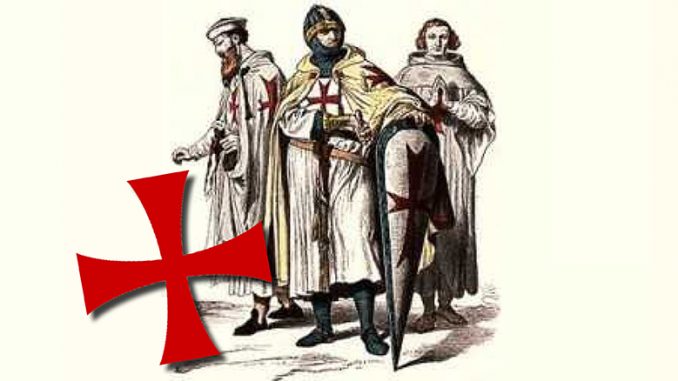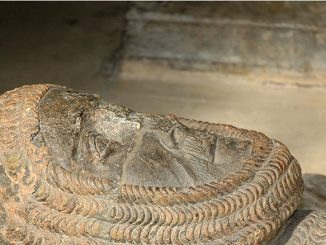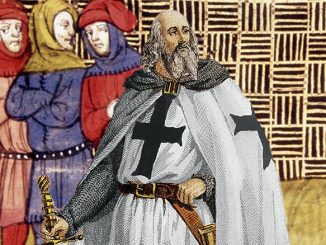
The following article on Templar Hierarchy is intended as an overview. Please keep in mind that as the Order grew in size and scope, new positions were created.
The Grand Master
The Grand Master was the supreme authority of the Templar Order and answered to none save the pope. Once elected to the office, the Grand Master served for the remainder of his life. In several cases that lifetime was cut short. Several Grand Masters were killed in battle, showing that the position was far more than an administrative one.
While each country had its own Master, the Grand Master was above each of them. In addition to overseeing military operations, the Grand Master was also responsible for the business dealings of the Order.
Seneschal
The Seneschal was the right hand man to the Grand Master and in modern terms would be similar to a vice president of a corporation. The Seneschal also acted as a consigliere or advisor to the Grand Master and looked after a great deal of the administrative duties.
Along with the Grand Master, the Seneschal ruled over eight Templar provincial Masters. These provinces were chiefly Aragon, Apulia, England, France, Hungary, Poitiers, Portugal and Scotland.
Marshal
The Marshal of the Order was the Templar in charge of war and anything that was related to it. In this sense, the Marshal could be viewed as the second most important member of the Order after the Grand Master.
His personal retinue was comprised of two squires, one turcoman, one turcopole and one sergeant. He also had four horses at his command.
Under Marshal
The Under Marshal was in charge of the footmen and the equipment.
Standard Bearer
The Standard Bearer was in charge of the squires and, despite the title of his office, never seemed to actually carry the Order’s standard himself.
Draper
The Draper was in charge of the Templar garments and linens and while this may seem like a menial task, the Templar Rule of Order states that after the Master and Marshal, the Draper was superior to all brethren.
The Templar Rule of Order said of the Draper’s responsibilities regarding the robe of the order, “and the Draper or the one who is in his place should studiously reflect and take care to have the reward of God in all the above-mentioned things, so that the eyes of the envious and evil-tongued cannot observe that the robes are too long or too short; but he should distribute them so that they fit those who must wear them, according to the size of each one.”
The Draper had in his personal retinue two squires, a number of tailors and one brother in charge of the pack animals who would carry supplies. In addition the Draper, like the Marshal, had four horses at his disposal.
Commanders of the Lands: Jerusalem, Antioch and Tripoli
These Templar officers operated much like a Baillie and operated under the Masters. Commanders were responsible for all Templar houses, castles and farms in their jurisdiction.
The personal retinue of the Commanders consisted of two squires, two foot soldiers, one sergeant, one deacon and one Saracen scribe. Like others, the Commander had four horses at his command as well as one palfrey (riding horse).
Commanders of knights, houses and farms (Casals)
These Templars fell under the Commanders of Lands and were responsible for the day-to-day operations of the various estates under their care. Generally speaking, they were knights, but if no knight resided in the region, the position could go to a sergeant.
If the Commander was a knight he was permitted four horses, but if a sergeant he was allowed only two.
Provincial Masters
Provincial Masters, who governed the western districts, were similar to the Commanders of Lands, but seem to have largely been responsible for managing revenue and recruiting new men to the Order.
Knights and Sergeants
The bulk of the Templar’s military might was comprised of knights and sergeants. Although both classes of Templars were as likely to die in battle, the knight had a higher ranking within the Order.
Knights had to be men of noble birth and wore the white mantle which is the most familiar garment of the Order. Each knight was permitted one squire and three horses.
Sergeants did not have to be of noble birth and to show their lower rank, sergeants wore a black or brown mantle. They were given one horse and had no squires under their command.
About Us
We hope you enjoyed this article on Templar Hierarchy.
TemplarHistory.com was started in the fall of 1997 by Stephen Dafoe, a Canadian author who has written several books on the Templars and related subjects.
Read more articles like Templar Hierarchy in our Templar History Archives – Templar History



